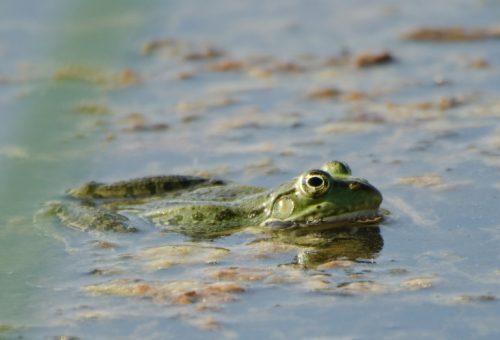The effects of climate change and the poisoning of water sources may lead to severe damage to frogs and toads. What can be done to stop the damage?

By: Yahli Katz, Zwata - Science and Environment News Agency
Not all of us like toads and frogs and probably most of us will not kiss a frog to see if it will turn into a prince. However, these small creatures bring a lot of benefit to man, since they feed, among other things, on water insects, including man's sworn nuisance, the mosquito. Now, a new study conducted in the US shows that climate change and pollution of water sources threaten the future of these crunching and slippery creatures.
Climate change, pollution of water sources and reduction of moist habitats - those "swamps" where the frogs and toads live - expose them to many dangers. The first victims are the eggs and tadpoles, the offspring of frogs and toads. The eggs and tadpoles need an aquatic habitat where they change their shape and develop into a toad or a frog. However, in view of the climate change causing a decrease in rainfall, a shortening of the winter season, an increase in temperature and increased evaporation in many places, premature drying of winter ponds means that the tadpoles fail to complete the change of shape and die. Mass mortality of tadpoles may also occur as a result of exposure to high levels of pollutants.
Who will die first?
In light of these gloomy predictions, the studies that examine the impact of environmental threats on various species of amphibians, including toads and frogs, are multiplying. Most studies focus on the impact of a specific threat on a single species; But a new study conducted in the USA assessed how climate change and pollution of water sources (especially copper pollution) may affect the future of toads (of the Anaxyrus terrestris species) and frogs (of the Lithobates sphenocephalus species). Amphibians are particularly sensitive to changes in copper concentration levels in water, so the researchers chose to examine the source of this contamination. Also, the researchers focused specifically on these two species, because they are common in a variety of humid habitats in the US in general, and in polluted habitats in particular.
Using a model, the researchers evaluated how different levels of copper concentrations in the water and changes in climate conditions (the chance of dehydration and mass mortality events) might affect the survival of the offspring and subsequently the survival of both species. After running a thousand simulations that evaluated the state of the populations for 50 years, it was found that the drying events had a particularly large effect on the survival of the populations. Also, when the levels of copper concentrations were high, the survival of the populations was low and among both species the populations were reduced to half their size. The researchers entered into the model information from laboratory experiments that examined the actual survival of tadpoles of these two species exposed to copper, so that the model is based on real data.
When the researchers examined the effect of each threat separately, differences were found between the two sexes. Toads were found to be more susceptible to infection than frogs. On the other hand, the frogs showed a higher sensitivity to dehydration events. For example, according to the model, if every three years there is a climatic change that leads to the drying of the habitat and the mass death of all the tadpoles, the frogs' chances of survival will be 37 percent compared to 75 percent among toads.
There is something to do
On a global level, amphibian populations are shrinking, and in Israel the situation is no different. In addition to climate change, due to the pressures of construction and development, pumping water from streams and groundwater, the flow of sewage and other pollutants, the humid habitats that serve as a living area for those populations are being damaged. A prominent manifestation of this damage can be seen in the extinction of most of the wet habitats (mainly the winter pools, of which 90 percent have disappeared) along the coastal plain, which were destroyed as a result of the construction and development pressures. For this reason, today, some of the remaining humid habitats are protected through nature reserves and national parks. The winter pools are almost unprotected due to their tiny size and proximity to cities. The Society for the Protection of Nature does a lot to protect and restore the winter pools.
During the last decade, a new policy has been developed that sees nature also as a consumer of water and no longer only as a water resource. This policy, which is not yet implemented, is recognized in the Water Law and is promoted through a water master plan in which the Water Authority, the Ministry of Environmental Protection and the Nature Reserves and Gardens Authority are partners. So the next time you come across a winter puddle or just a puddle, check to see if there are frogs or toads in it - and remember that they are also in danger.

One response
A problem for the French now they will be able to...